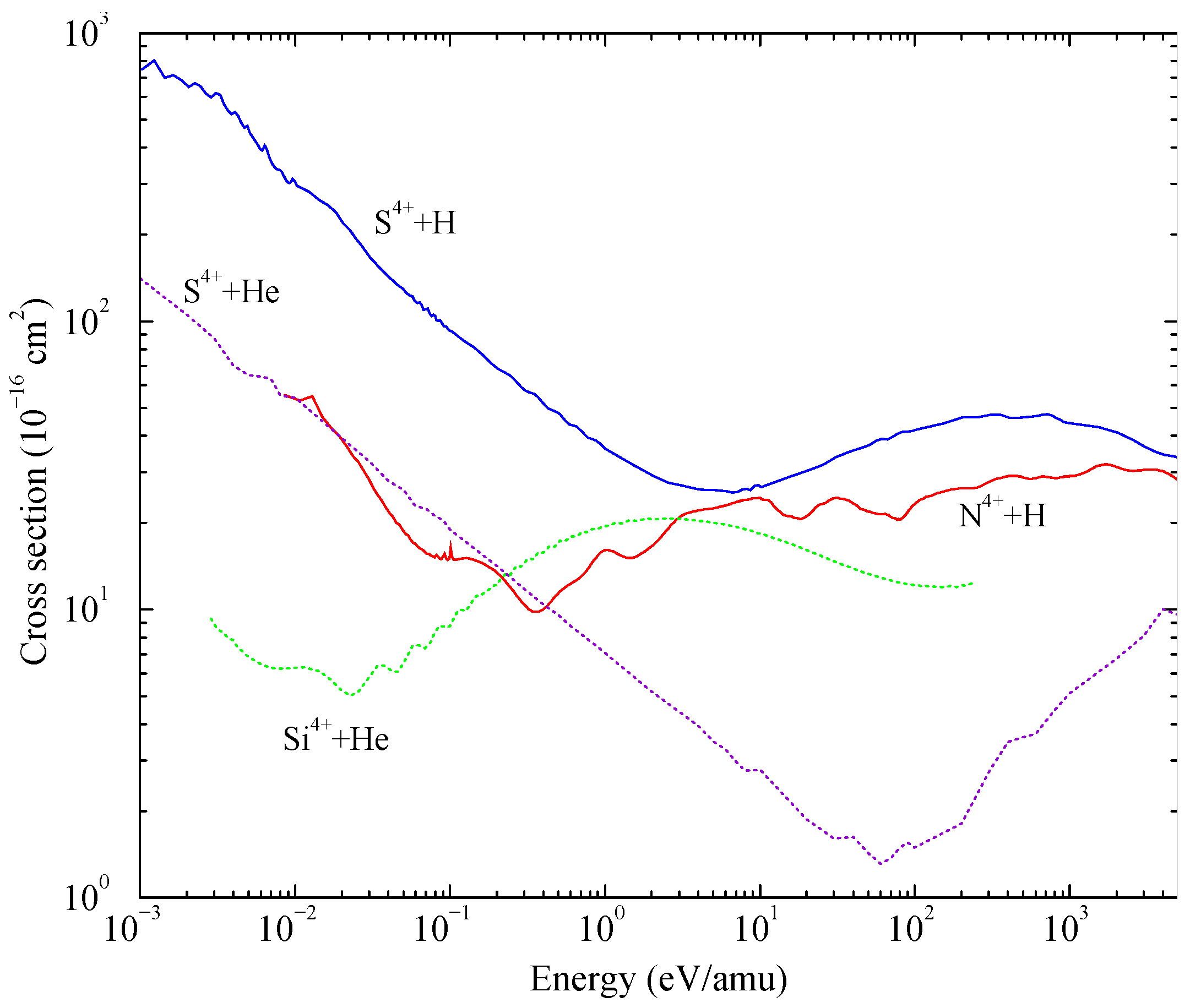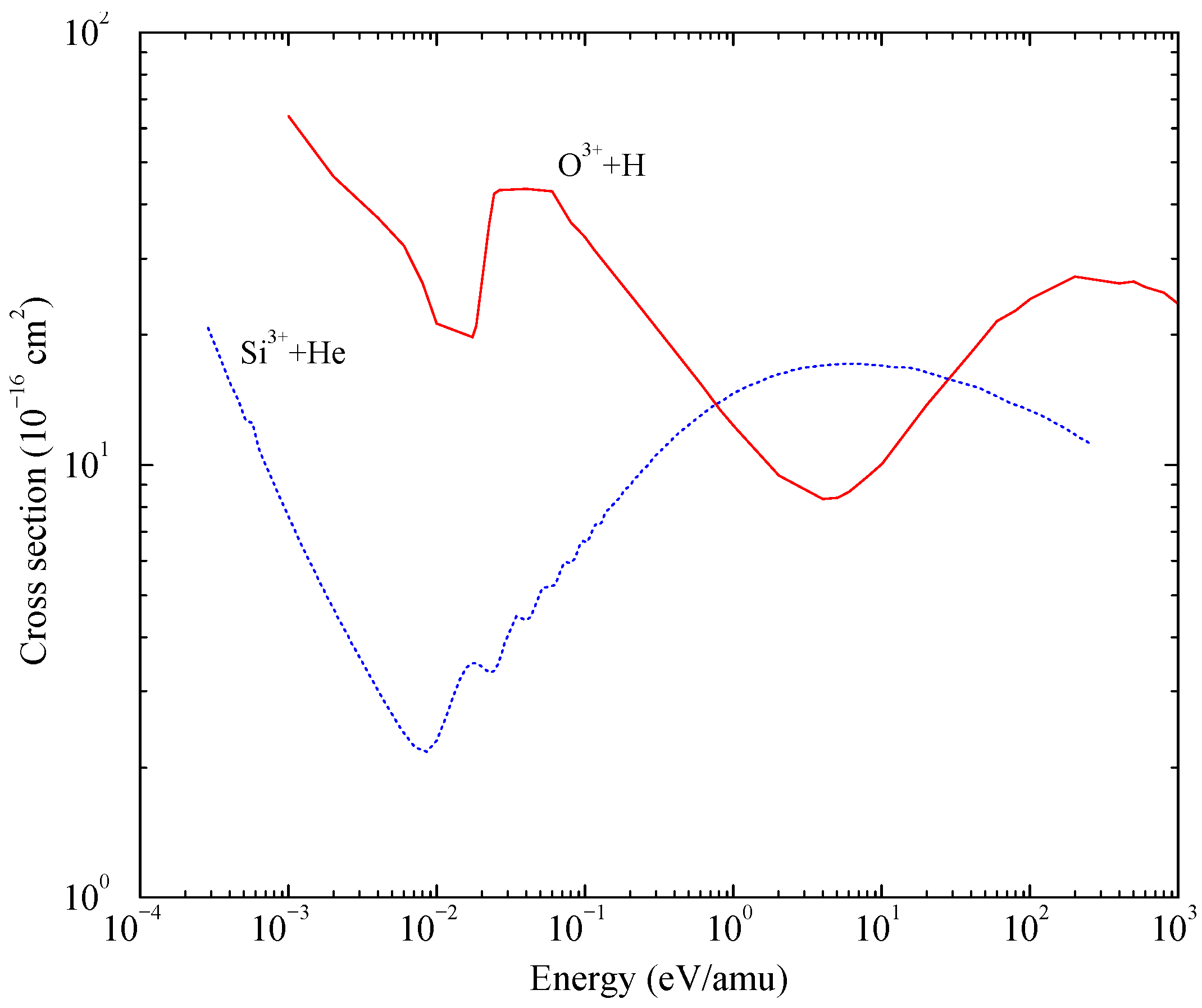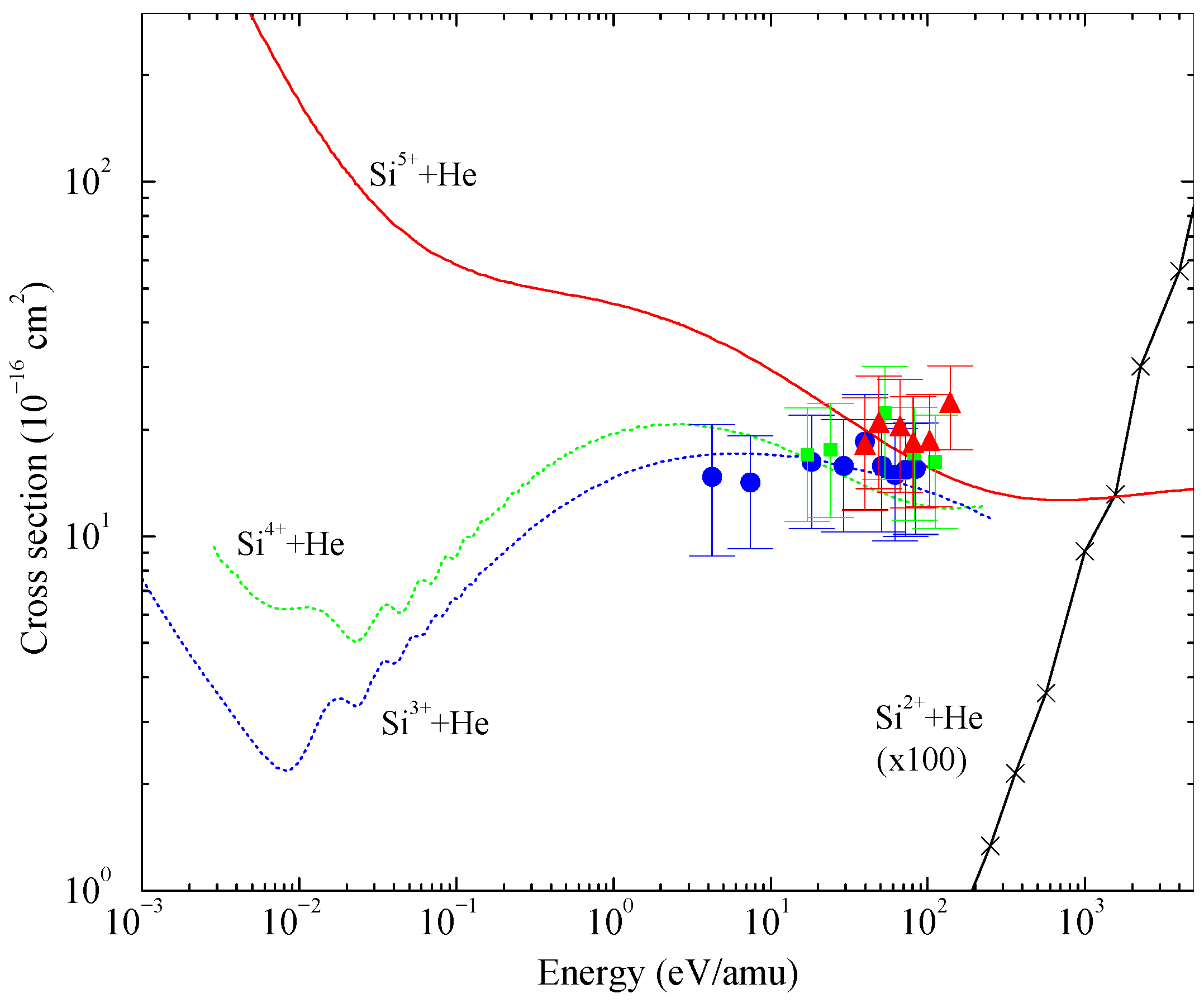Low-Energy Charge Transfer in Multiply-Charged Ion-Atom Collisions Studied with the Combined SCVB-MOCC Approach
Abstract
:1 Introduction

2 Electronic structure calculations

 , is fully optimized in the full spin space for N active electrons with total spin quantum number S and projection M. Each of the spin-coupled orbitals (φ) is fully optimized in a flexible atom-centred Gaussian basis set, without any localization or overlap constraints. The doubly-occupied inactive orbitals (ϕ) may be similarly optimized, simultaneously with the active orbitals but, in the present work, it proved more useful to import (fixed) natural orbitals from suitable CASSCF calculations.
, is fully optimized in the full spin space for N active electrons with total spin quantum number S and projection M. Each of the spin-coupled orbitals (φ) is fully optimized in a flexible atom-centred Gaussian basis set, without any localization or overlap constraints. The doubly-occupied inactive orbitals (ϕ) may be similarly optimized, simultaneously with the active orbitals but, in the present work, it proved more useful to import (fixed) natural orbitals from suitable CASSCF calculations.  is the perfect-pairing spin function for the inactive electrons.
is the perfect-pairing spin function for the inactive electrons.3 Scattering calculations



4 Survey of charge transfer calculations


5 Summary and future directions

 ) vibrationally-resolved cross sections. Additionally, it would be worthwhile to continue our studies of the target isotope effect [3], not addressed here, to the isotopomers of H2. Finally, we intend to extend the applicability of our approach to higher energies by including ETF effects and by accounting for the continuum channel, the neglect of the latter being a well-know failing of the MOCC approach at higher energies.
) vibrationally-resolved cross sections. Additionally, it would be worthwhile to continue our studies of the target isotope effect [3], not addressed here, to the isotopomers of H2. Finally, we intend to extend the applicability of our approach to higher energies by including ETF effects and by accounting for the continuum channel, the neglect of the latter being a well-know failing of the MOCC approach at higher energies.Acknowledgments
References
- Massey, H. S. W.; Smith, R. A. Proc. Roy. Soc. 1933, A142, 142.
- Cooper, D. L.; Gerratt, J.; Raimondi, M. Chem. Rev. 1991, 91, 929.
- Cooper, D. L.; Clarke, N. J.; Stancil, P. C.; Zygelman, B. Adv. Quant. Chem. 2001, 40, 37.
- Kimura, M.; Lane, N. F. Ad. At. Mol. Phys. 1990, 26, 79.
- Zygelman, B.; Cooper, D. L.; Ford, M. J.; Dalgarno, A.; Gerratt, J.; Raimondi, M. Phys. Rev. A 1992, 46, 3846. [PubMed]
- Heil, T. G.; Butler, S.; Dalgarno, A. Phys. Rev. A 1981, 23, 1100.
- Bates, D. R.; McCarroll, R. Proc. Roy. Soc. 1958, A245, 175.
- Johnson, B. R. J. Comput. Phys. 1973, 13, 445.
- Bliek, F. W.; Woestenenk, G. R.; Hoekstra, R.; Morgenstern, R. Phys. Rev. A 1998, 57, 221.
- Stancil, P. C. Proceedings of the Photoionized Plasmas 2000 Workshop, PASP; 2001; pp. 1–14.
- Stancil, P. C.; Zygelman, B.; Clarke, N. J.; Cooper, D. L. J. Phys. B 1997, 30, 1013.
- Zygelman, B.; Stancil, P. C.; Clarke, N. J.; Cooper, D. L. Phys. Rev. A 1997, 56, 457.
- Stancil, P. C.; Turner, A. R.; Cooper, D. L.; Schultz, D. R.; Rakovic, M. J.; Fritsch, W.; Zygelman, B. J. Phys. B 2001, 34, 2481.
- Stancil, P. C.; Zygelman, B.; Clarke, N. J.; Cooper, D. L. Phys. Rev. A 1997, 55, 1064.
- Wang, J.; et al. J. Phys. B 2001. submitted.
- Wang, J.; Stancil, P. C.; Turner, A. R.; Cooper, D. L. 2001; in preparation.
- Stancil, P. C.; Clarke, N. J.; Zygelman, B.; Cooper, D. L. J. Phys. B 1999, 32, 1523.
- Clarke, N. J.; Stancil, P. C.; Zygelman, B.; Cooper, D. L. J. Phys. B 1998, 31, 533.
- Turner, A. R.; Cooper, D. L.; Wang, J.; Stancil, P. C. 2001; in preparation.
- Suzuki, S.; et al. Phys. Rev. A 1999, 60, 4505.
- Tawara, H.; et al. Phys. Rev. A 2001, 63, 062701.
©2002 by MDPI, Basel, Switzerland. Reproduction for noncommercial purposes permitted.
Share and Cite
Low-Energy Charge Transfer in Multiply-Charged Ion-Atom Collisions Studied with the Combined SCVB-MOCC Approach. Int. J. Mol. Sci. 2002, 3, 220-229. https://doi.org/10.3390/i3030220
Low-Energy Charge Transfer in Multiply-Charged Ion-Atom Collisions Studied with the Combined SCVB-MOCC Approach. International Journal of Molecular Sciences. 2002; 3(3):220-229. https://doi.org/10.3390/i3030220
Chicago/Turabian Style2002. "Low-Energy Charge Transfer in Multiply-Charged Ion-Atom Collisions Studied with the Combined SCVB-MOCC Approach" International Journal of Molecular Sciences 3, no. 3: 220-229. https://doi.org/10.3390/i3030220




